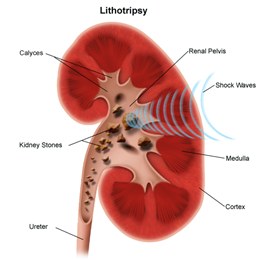Active Surveillance for Kidney Cancer
Featured Expert:
Active surveillance is the least invasive treatment option for managing kidney cancer. Urologic oncologist Nirmish Singla, M.D., M.Sc., of Johns Hopkins’ kidney cancer program, explains how it works.
What is active surveillance for kidney cancer?
Active surveillance is observing a kidney tumor through regular imaging. Not all small masses are cancers and for others with known cancers, the risk of progression is low when the tumor is small. In addition, tumors that are predominantly cystic (filled with fluid) are less likely to progress. In these cases the risk of intervention may outweigh the risks of the tumor itself. For some patients, no further intervention is needed, while for others, certain triggers can indicate that additional therapy is appropriate.
“Patients with tumors smaller than 2 centimeters are ideal candidates for active surveillance due to the low likelihood that the tumor will spread during observation,” Singla says. “However, patients with tumors up to 4 centimeters can be safely watched based on a number of factors.”
Who may be a candidate for active surveillance?
Your doctor may discuss this approach if you:
- Have poor kidney function. Since any intervention on the kidney can cause further deterioration of kidney function, impaired kidneys may be a reason to recommend active surveillance to lessen the chance that you will need dialysis. Dialysis, while lifesaving, can have an impact on your life expectancy and quality. To assess kidney function, Singla says patients’ doctors will look at levels of creatinine or estimated glomerular filtration rate.
- Live with hereditary forms of kidney cancer including Von Hippel-Lindau syndrome, Birt-Hogg-Dubé syndrome or other conditions that increase your risk of multiple tumors on both sides. These tumors are typically managed with active surveillance until they reach 3 centimeters or larger. Genetic testing is necessary to confirm these syndromes when suspected.
- Have drug-eluting heart stents and/or need to be on a blood thinner. Kidney surgery and other interventions can result in severe bleeding. A period of active surveillance until you can come off the blood thinners may be helpful to avoid potentially serious complications.
- Are older and medically fragile. Small kidney tumors have a low risk of spreading. Older adults with other health problems should discuss if active surveillance is an option.
- Are experiencing or recovering from an active serious medical problem. A period of active surveillance can monitor a kidney tumor until you are better.
- Do not wish to have surgery or treatment.
- Those with predominantly cystic tumors. Studies have shown that even if larger, these are less likely to progress.
What does active surveillance involve?
“The exact plan is customized to the patient,” says Singla. “The process may start with a complete staging evaluation (blood work and CT, MRI or ultrasound of your chest, abdomen and pelvis) to rule out spreading cancer. A biopsy may be performed to provide further information but is not necessary. After that, the doctor may recommend imaging every three to six months for two years, then every six to 12 months annually.”
Can the kidney tumor spread while I am on active surveillance?
The answer to this is, unfortunately, yes. However, the risk is very low (less than 2%). The risk is lower with smaller tumors but goes up with increasing tumor size. All people and tumors are unique, and this risk should be discussed with your urologist. This risk can be minimized with proper patient selection and follow up. Any abnormal growth on imaging may warrant intervention rather than continued observation.
When might I require therapy beyond active surveillance?
The most common trigger for intervention is tumor growth of 5 or more millimeters a year or change in characteristics such as more “solid appearing”. The presence of either of these factors increases the chance of having a potentially aggressive cancer.
|
Kidney Tumor Size |
Risk of Spread |
|
< 2 centimeters |
< 1% |
|
3 centimeters |
1% to 2% |
|
4 centimeters |
3% to 5% |
A change in your health may also signal that it is time for an intervention. For example, a person who had a heart attack when a 2.5-centimeter kidney tumor was discovered a year ago may have now recovered from the heart attack and may be OK to have surgery.
Is active surveillance for kidney cancer safe?
According to one study, active surveillance “remains a safe initial management option for many patients. [Delaying intervention] does not compromise oncologic outcomes or limit treatment options.” A lifelong commitment to follow up imaging is absolutely necessary.
Johns Hopkins leads the largest prospective registry of small kidney masses, termed the Delayed Intervention and Surveillance for Small Renal Masses (DISSRM) registry. The study, by Johns Hopkins urologists using this registry, showed that a period of active surveillance did not alter oncologic outcomes in patients with small renal masses.
In this study, patients delayed treatment of their small kidney mass by over one year. All were eventually treated with minimally invasive surgery successfully.
Learn more about kidney cancer diagnosis and screening for other urologic conditions.




